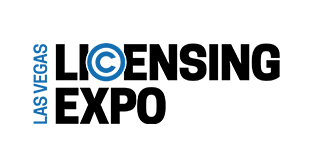Read how the removal of Instagram ‘likes’ will impact today’s social media influencers.

This year, Instagram announced it will hide the number of likes you’ll see in a post. While names of Instagram followers who like a post will show, the actual number of likes will be shared with the account owner only. The trial run started in Canada in May, and has rolled out to Australia, New Zealand, Ireland, Italy, Japan and Brazil as of July, according to the BBC.
While the casual user may not notice (or care about) this update, this does concern social media influencers. Not all influencers struck lucrative licensing deals like LaurDIY, who signed with The Brand Liaison and scored licensing deals from pet goods to crafting; or esports influencer “Ninja,” who is now represented by The Brand Central and has a number of licensing deals; and YouTuber Jake Paul, who spoke about his licensing program at the Licensing Leadership Summit in 2018. Most influencers’ livelihoods depend on the number of likes their posts receive. It’s the most instant hard data to show companies just how many people see–and approve of–their posts.
The lack of likes is just one of the many obstacles social media influencers are facing. Once able to post without consequence, influencers are now being held accountable for several reasons by their followers (who will call out everything from fake “sponcon” deals to faulty branded products) as well as business watchdogs.
In 2017, the Federal Trade Committee issued a guide for influencers to follow when creating sponsored content. In short, influencers must disclose company affiliations within their captions and hashtags, or face possible consequences. The FTC might bypass the influencer and go directly to the ad and marketing firms working with the offending influencer, who could subsequently lose revenue when companies’ public relations teams drop them from PR lists.
Still, many influencers aren’t upholding the stricter standards. Advocacy group Truth in Advertising followed more than 1,400 influencer advertisements published from 20 influencers between May 2017 and Dec. 2018 who received official warning letters from the FTC. In the study, TiA found that not one example met the standards laid out in the guidelines.
Some influencers may think they’re above the standards, but their impact isn’t the same. In a report by SocialMediaToday.com, the power of influencer marketing has waned. Timelines are now flooded with sponcon, making consumers wary of not just the influencers but the product they’re promoting.
Businesses may want to instead tailor their marketing to Generation Z, according to The Business of Fashion. Gen Z has more in common with Gen X (their parents’ demographic) than Millennials: Gen Z has less debt but is more cautious. They won’t go broke emulating an influencer’s lifestyle. So, companies will have to try harder and be more earnest while getting their dollars.
Read more about:
InstagramAbout the Author(s)
You May Also Like








